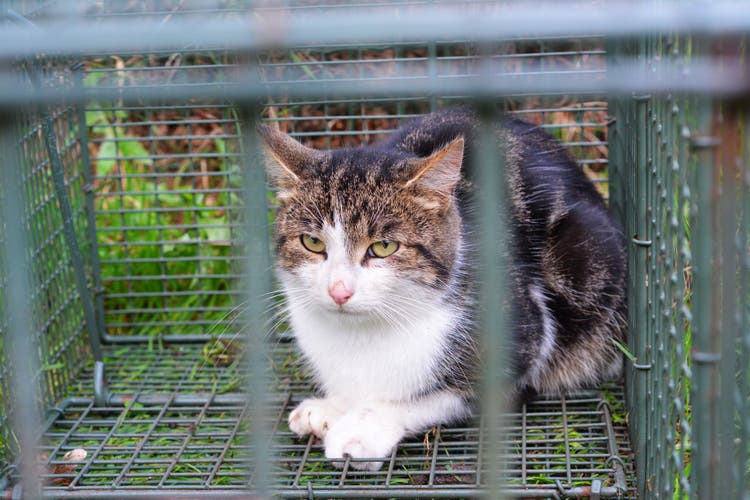
Why You Should Use Cat Traps for Your Local Strays
Cat traps are a painless and humane method for safely capturing cats. Don’t try to pick the cat up to put it in a carrier. Use humane cat traps to ensure the safety of the cats and you.
Cat traps come in different styles, like a box trap or a drop trap. In some areas, you may be able to borrow a cat trap from a local animal shelter, or they may be able to teach you how to work with a cat trap. If you cannot borrow a cat trap, you can purchase a humane cat trap.
Before trapping begins, you should have a warm, dry, secure holding place ready to house the cat or cats that you trap. You must have your spay or neuter appointments scheduled before you trap. You must purchase or borrow your traps before you are ready to begin trapping, and you should have transportation ready to transport the trapped cats.
What Cat Traps Are Used For
Cat traps are a safe and humane method for catching a cat. You may decide to use a cat trap to catch a neighborhood stray, or you may use cat traps to safely Trap-Neuter-Return (TNR) community cats. Cat traps may be purchased, or sometimes they may be borrowed from local rescue organizations.
The normal trap used for TNR is a box trap. To use the box trap, bait (food) is placed in the rear of the trap. The cat enters the trap through the front. On its way to eat the food the cat steps on a trip plate which triggers the front door to shut behind the cat.
After the cat is captured the box trap will double as a cage to house and transport the animal.
How to Attract Cats to Your Trap
If you plan to trap a cat, the first step is to get the cat on a regular feeding schedule. Cats are much easier to trap once they have been trained to eat on a predictable schedule. Once you know when and where the cats will turn up, you will know the best time and place to set your cat traps. Most feral and stray cats come out in the evening. Set the food out after dinner but before dusk, and never leave the food out overnight. This method will get the cat to return at the same time every day.
The day before you plan to capture the cat, feed it only half as much food or withhold food altogether. This is to help to ensure that the cat is hungry on trapping day.
To attract the cats to the cat traps, you must first bait and set the trap. Place a small amount of food on a paper plate and place it behind the trap’s step plate. Use tuna, mackerel, sardines or a food with a strong odor. Set your trap and wait until the cat returns for its regular feeding. Hopefully, it will walk into the cat trap, setting it off.
Once you trap the cat, cover it immediately to help calm the cat. The cat will begin to panic after being trapped. To calm the cat, place a sheet or towel over the trap.
Where to Take a Cat After You Catch It
Before you try to trap the cat, contact a no-kill shelter and ask about the Trap-Neuter-Return (TNR) programs in your area. These programs will not find a home for the cat. Instead, they will neuter or spay the cat and clip one of their ears (for easy identification of a cat that has been treated through the TNR program), and they will return them to where they were found. Never try to relocate the animal as it will be disoriented and will likely die. Return the cat to the same area where you found it.
You may also contact your local Humane Society for help in handling the situation.
For more information about rescuing stray and feral cats, read our article Stray Cat Rescue: How to Help Your Community.
To learn more about feral cats, go to What Is a Feral Cat?